
August 2020 Weather and Its Impacts on Missouri
Pat Guinan
State Climatologist
University of Missouri Extension
Seasonably cool August temperatures impacted Missouri with preliminary data indicating a statewide average temperature of 74.2°F, or 1.9° below the long-term average, Figure 1. It was coolest August since 2017. Near to below normal temperatures occurred during the first three weeks of August followed by warmer conditions in the final 10-days, including a few days with high temperatures in the lower and mid-90s, Figure 2. It was the third cooler than average month for the year, Figure 3.
Daily summer temperatures this year reflected the overall trend for the past few decades, with no prolonged periods of extreme high temperatures. Preliminary mean summer temperature data (Jun-Jul-Aug) indicate slightly above normal conditions this year, Figure 4. The statewide average summer temperature was 76.1°F, 0.5° above the long-term average. Summer weather patterns over the past several decades indicate little change in maximum temperature trends whereas minimum summer temperatures have been warming, Figures 5 and 6. This phenomenon is primarily due to above average summer dew point temperatures in Missouri, Figure 7, which act to suppress maximum air temperature and elevate minimum air temperature.
Drier than average weather impacted Missouri in August with preliminary data indicating a statewide average of 2.89 inches, 0.81 inches below the long-term average. It was the first drier than average August since 2012, Figure 8, and third below average month for the year, Figure 9.
Typical of the summer season, August rainfall was highly variable, ranging from less than 0.25 inches to nearly 1-foot. Radar estimates indicated pockets of more than 5-inches in parts of the state and driest areas located in some far northern counties and southwestern sections, Figure 10. Remnants of Hurricane Laura impacted southeastern Missouri on August 28. Some of the lightest and heaviest August rain gauge reports are listed in Table 1.
According to the U.S. Drought Monitor map, for the week of August 25, 2020, abnormally dry conditions to severe drought was impacting parts of Missouri, Figure 11. Impacts were accumulating, with crop stress, burned-up pastures and decreasing water supplies reported in parts of southwestern Missouri where dry conditions have been ongoing since early June.
| Missouri High and Low Rainfall Extremes for August 2020* | |||
| Station Name* | County |
Rainfall (in) | |
| Heaviest | Hermann 3.0S | Gasconade | 11.72 |
| Poplar Bluff 4.2NW | Butler | 10.01 | |
| Ellsinore 4.8WNW | Carter | 9.82 | |
| New Haven 2.3S | Franklin | 8.26 | |
| Williamsville | Wayne | 8.04 | |
| Lightest | Burlington Junction | Nodaway | 0.19 |
| Grant City 0.5NE | Worth | 0.20 | |
| Unionville | Putnam | 0.21 | |
| Lancaster 0.2SE | Schuyler | 0.33 | |
| Linneus 2.5ESE | Linn | 0.43 | |
| *Rain gauges are from the NWS Cooperative Network or CoCoRaHS Network | |||
| Table 1. | |||
According to the Missouri Agricultural Statistics Service report for the week ending August 31, 2020, 64% of the state reported topsoil moisture supplies in adequate condition with 1% surplus, whereas 31% of Missouri reported short topsoil moisture supply and 4% very short. Subsoil moisture supplies were reported 69% adequate and 0% in surplus condition compared to 29% of the state reporting subsoil moisture supplies short and 2% very short. Corn was reported 77% in good to excellent condition compared to 38% last year. Soybean was reported 75% in good to excellent condition compared to 46% last year. Pastures were rated at 55% in good to excellent condition compared to 70% last year. Hay and other roughages were 87% adequate to surplus compared to 84% last year. Stock water supplies were 91% adequate and 9% short.
Jump to:
- Figure 1
- Figure 2
- Figure 3
- Figure 4
- Figure 5
- Figure 6
- Figure 7
- Figure 8
- Figure 9
- Figure 10
- Figure 11
- Figure 12
- Figure 13
- Figure 14
- Figure 15

Figure 1.
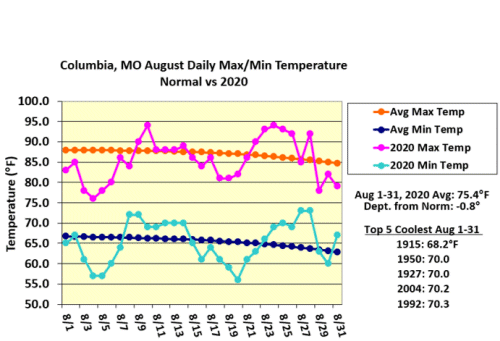
Figure 2.
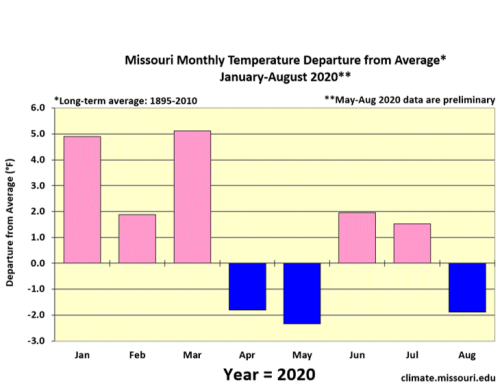
Figure 3.

Figure 4.

Figure 5.
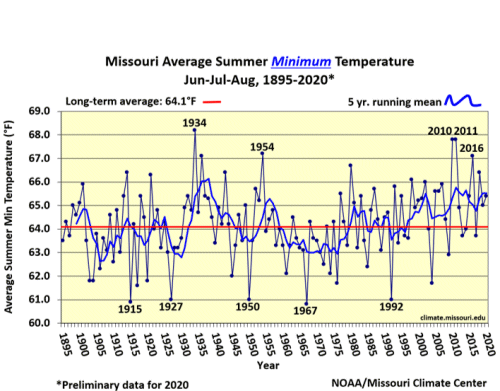
Figure 6.
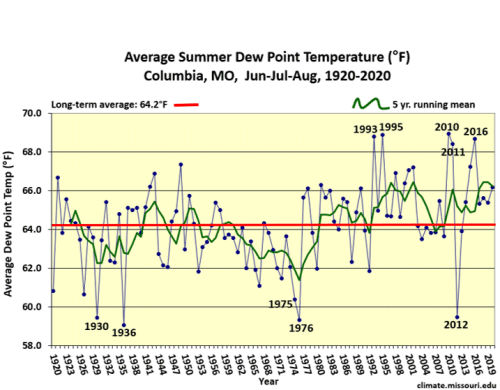
Figure 7.

Figure 8.

Figure 9.

Figure 10.
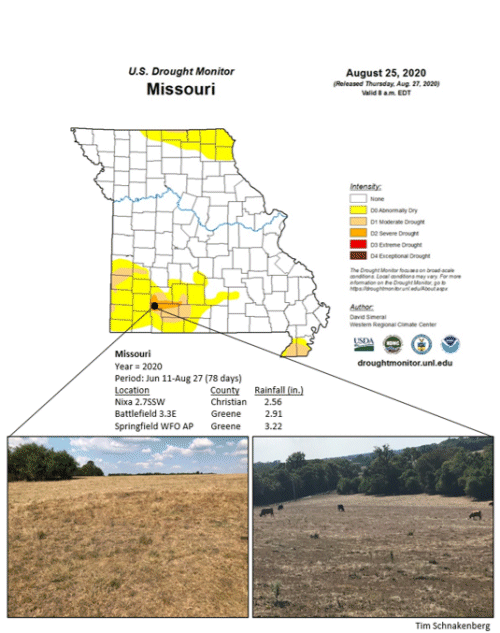
Figure 11.

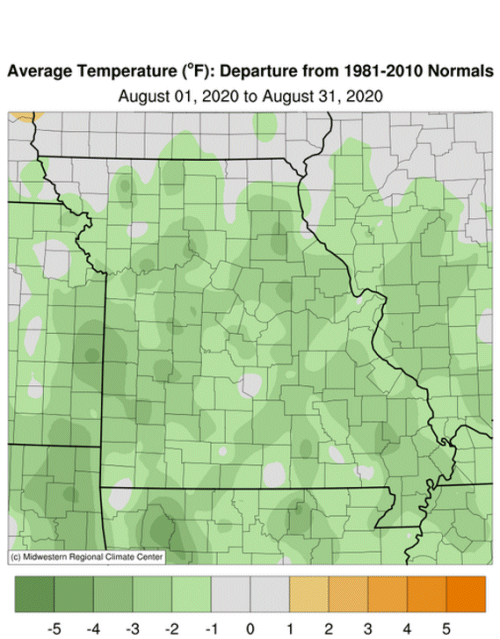
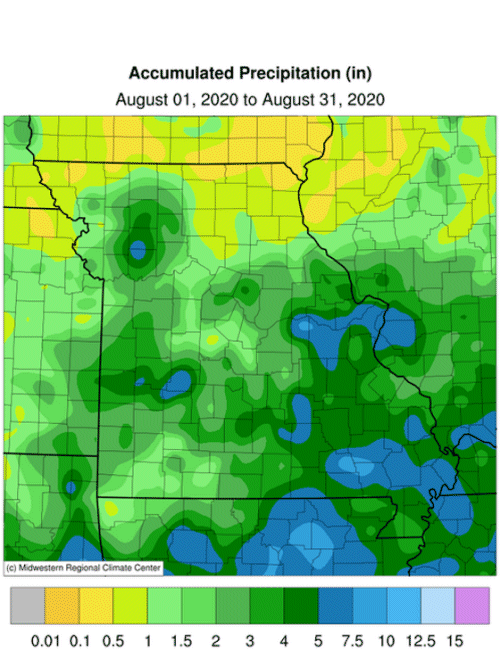
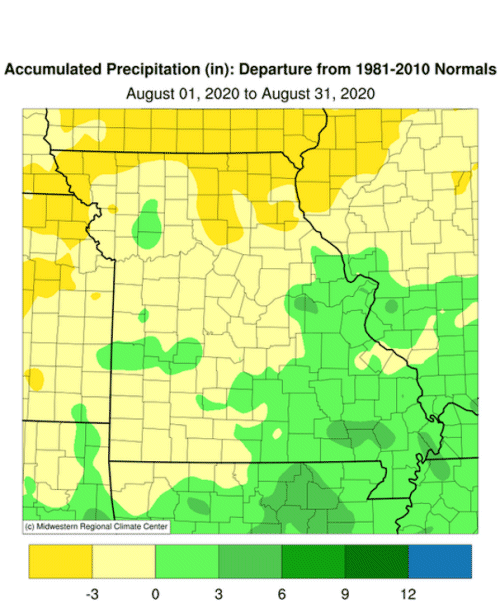
Source: Pat Guinan, 573-882-5908












